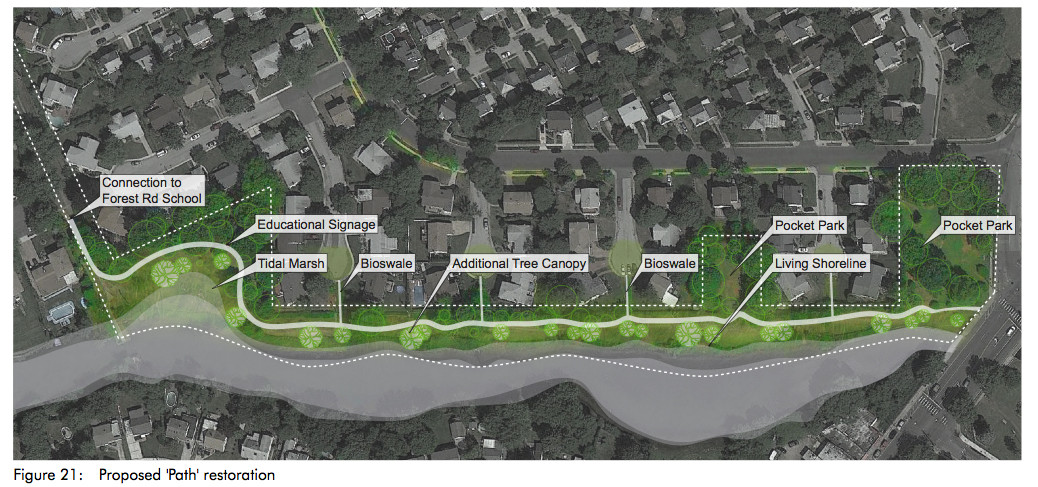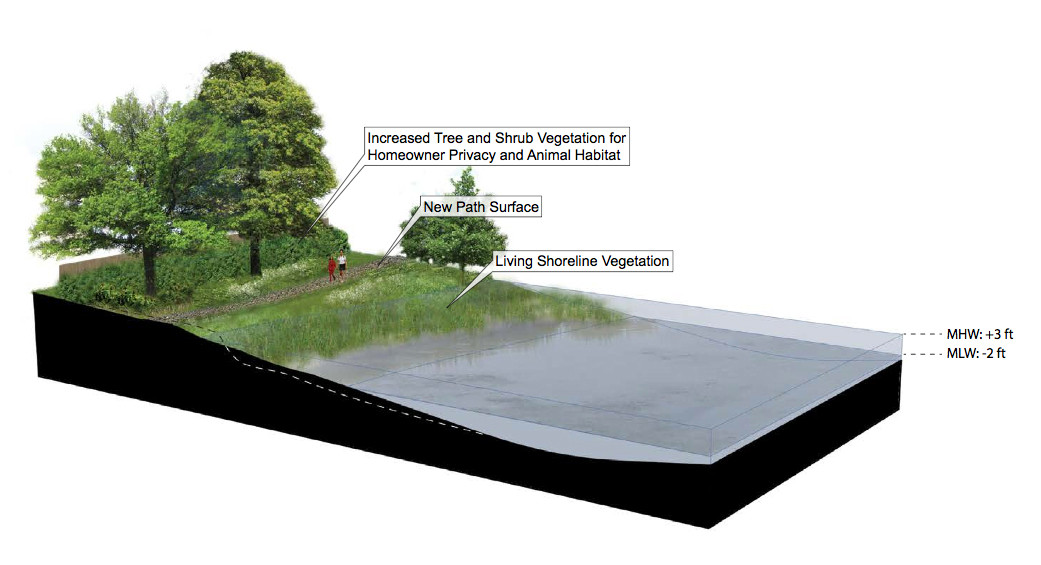Rethinking South Valley Stream
Public hears plans for New York Rising money
“Green” infrastructure is the hallmark of the plan to protect residents of South Valley Stream from future storms. Local leaders are eager to get the project started, which would be funded through the New York Rising program.
The final public engagement meeting of the South Valley Stream Community Reconstruction Program planning committee was held last Thursday night at the Forest Road School, where residents of Mill Brook, West Sunbury and North Woodmere learned about plans to improve the area’s resilience.
Over the last eight months, a committee of local residents, along with experts from the state, have sketched out a series of projects designed to minimize flooding and improve communication. James McAllister, a community planner from the Governor’s Office of Storm Recovery, said a process of this magnitude would normally take three years.
South Valley Stream was awarded $3 million in initial funds, and it recently won another $3 million in competitive money for its green infrastructure proposal. The planning committee initially identified $3.8 million worth of priority projects, so the extra money will ensure that all the work gets done.
Marc Tenzer, chairman of the South Valley Stream planning committee, said members will discuss how to use the remaining money. There is another $24 million worth of projects on the committee’s wish list.
The project that received accolades from the state would be the creation of a living shoreline along the west side of the creek that separates the Mill Brook and West Sunbury neighborhoods. There is already public land along the stream, known locally as “the Path” between Mill and Cloverfield roads.
The shoreline would be reconstructed to include natural vegetation and boulders. The land would be built up to absorb water before it flows into backyards and homes. Zavida Mangaru, a member of the planning committee, said this project could go a long way toward protecting the community. “It prevents the soil from eroding,” she said. “That’s what killed us, the erosion that’s been happening over time.”
She added that the big surge during Hurricane Sandy, followed by quickly receding water, only sped up that erosion. The living shoreline, she said, was the best option to both combat flooding and retain the natural beauty of the neighborhood. “It’s not just throw up a wall to block the water,” she said.
This $1.7 million project, which would include the planting of trees and other vegetation, can only be done along public shorelines because of stipulations with New York Rising money. Mangaru said she hopes residents with waterfront property would do similar work. She lives along the creek herself.
Niek Veraart, an environmental planner who has been working with the committee, agreed that a living shoreline is a good way to go. “You have to work with the land and work with the water,” he said.
Gov. Andrew Cuomo is offering another $50 million in New York Rising money, which is expected to be awarded in January. Mangaru said they want to be in contention for that. “We want a slice,” she said. “There’s a lot more to be done.”
McAllister said that the money would likely be awarded to communities that have shown substantial progress toward getting projects started. He said the state is requiring that each project take 24 months from start to finish, or funding could be in jeopardy. Also, he said, local committees must start spending their allocations by 2017, and must use it up by 2019.
To help get these projects under way, a grant manager will be hired to help local CRP committees file applications and other required paperwork for their projects. McAllister said either the Town of Hempstead or Nassau County would be responsible for soliciting bids from contractors and overseeing the work.
Other projects on tap for South Valley Stream would include repairing the bulkheads and Brook Road Park, at a cost of $2 million, and informing local residents on how to manage storm water on their own properties, such as by creating a rain garden. At the park, Veraart said the plan is to create a natural berm that would slow down the rush of water from a storm surge while also creating access to the stream for locals.
All projects need to be approved by the Governor’s Office of Storm Recovery.
Veraart added that there is also a study under way looking at how to improve the infrastructure along the entire South Shore, in addition to the projects taking place in each of the Community Reconstruction Program zones.
Although this was the final public engagement meeting, the local committee will continue to meet and solicit input from the community, Tenzer said.

 44.0°,
Mostly Cloudy
44.0°,
Mostly Cloudy 







